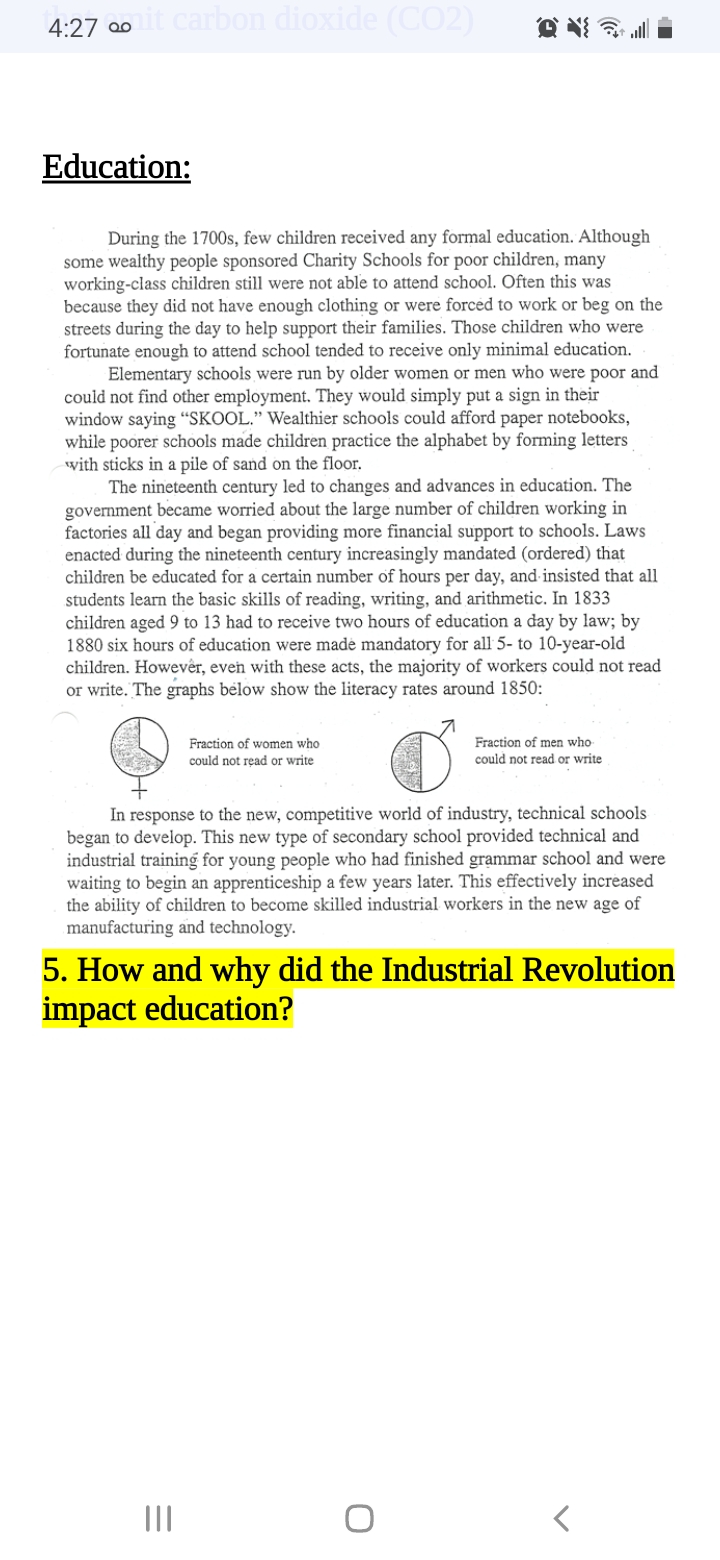5. How and why did the Industrial Revolution impact education?
Related questions
Question

Transcribed Image Text:4:27 a0 carbon dioxide (CO2)
Education:
During the 1700s, few children received any formal education. Although
some wealthy people sponsored Charity Schools for poor children, many
working-class children still were not able to attend school. Often this was
because they did not have enough clothing or were forced to work or beg on the
streets during the day to help support their families. Those children who were
fortunate enough to attend school tended to receive only minimal education.
Elementary schools were run by older women or men who were poor and
could not find other employment. They would simply put a sign in their
window saying “SKOOL." Wealthier schools could afford paper notebooks,
while poorer schools made children practice the alphabet by forming letters
with sticks in a pile of sand on the floor.
The nineteenth century led to changes and advances in education. The
government became worried about the large number of children working in
factories all day and began providing more financial support to schools. Laws
enacted during the nineteenth century increasingly mandated (ordered) that
children be educated for a certain number of hours per day, and- insisted that all
students learn the basic skills of reading, writing, and arithmetic. In 1833
children aged 9 to 13 had to receive two hours of education a day by law; by
1880 six hours of education were madė mandatory for all 5- to 10-year-old
children. Howevêr, even with these acts, the majority of workers could not read
or write. The graphs below show the literacy rates around 1850:
Fraction of women who
Fraction of men who-
could not read or write
could not read or write
In response to the new, competitive world of industry, technical schools
began to develop. This new type of secondary school provided technical and
industrial training for young people who had finished grammar school and were
waiting to begin an apprenticeship a few years later. This effectively increased
the ability of children to become skilled industrial workers in the new age of
manufacturing and technology.
5. How and why did the Industrial Revolution
impact education?
II
Expert Solution
This question has been solved!
Explore an expertly crafted, step-by-step solution for a thorough understanding of key concepts.
This is a popular solution!
Trending now
This is a popular solution!
Step by step
Solved in 3 steps
